Abstract
Hereditary hemochromatosis is transmitted as an autosomal recessive trait. Analyses of pedigrees suggest that the frequency of disease (proportion of homozygous individuals) in the general population is approximately 0.3% and that approximately 11% of the population are heterozygous. The genotype of 194 persons in 38 pedigrees was determined by HLA-A and HLA-B haplotyping. Likelihood analysis was then used to appraise the transferrin saturation test when used alone and in combination with the serum ferritin test to detect homozygosity and heterozygosity in these pedigrees. A single cut-off point of 55% for transferrin saturation and a cut-off point at the 90th percentile for the serum ferritin level were adequate for the detection of hemochromatosis if homozygosity was considered to be present when the results of one or both tests were positive. To further assess the value of the transferrin saturation test the percentages were stratified into five intervals. A percentage transferrin saturation of 75 or greater and a serum ferritin level above the 90th percentile ruled in homozygosity, whereas a percentage transferrin saturation of less than 55 and a serum ferritin level at or below the 90th percentile ruled it out with confidence. The probability of heterozygosity rose to 90% when the percentage transferrin saturation was between 35 and 55 and the serum ferritin level was at or below the 90th percentile. The use of five cut-off points allowed the probability of homozygosity and heterozygosity in a pedigree to be estimated for all values of transferrin saturation. Although these screening tests are not recommended for use in the general population, they may be worth while in selected groups of patients.
Full text
PDF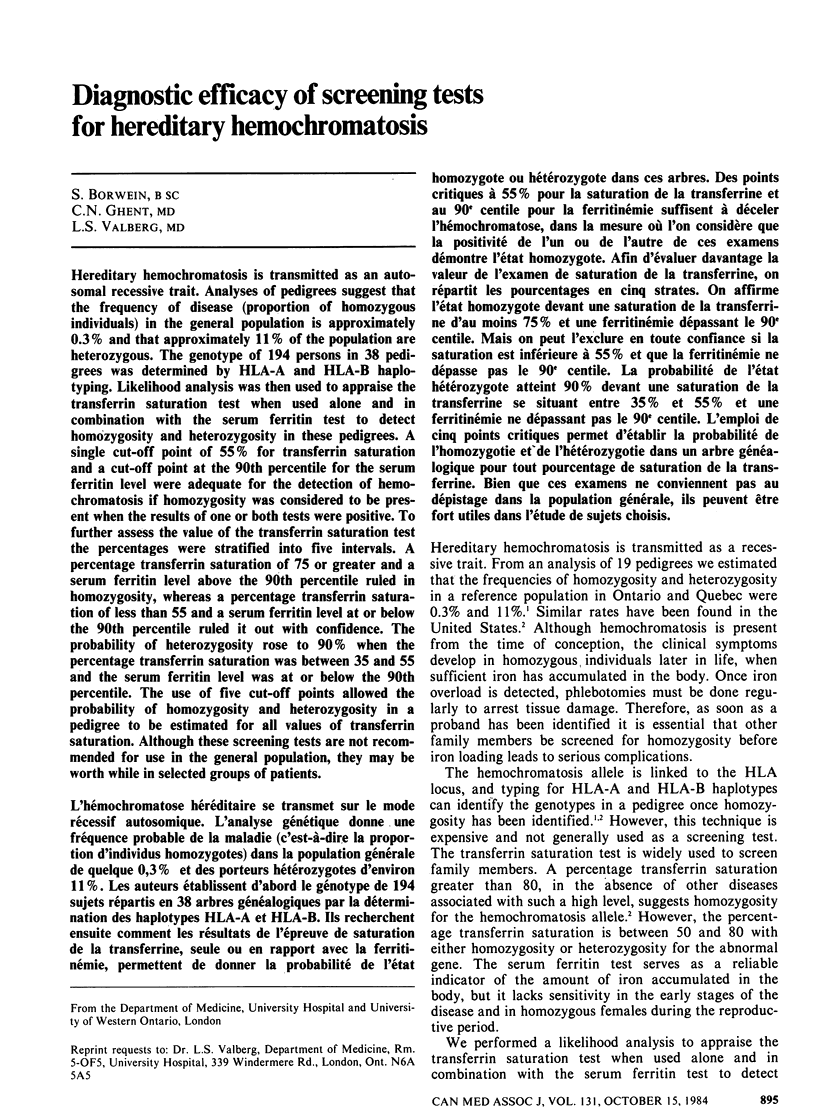
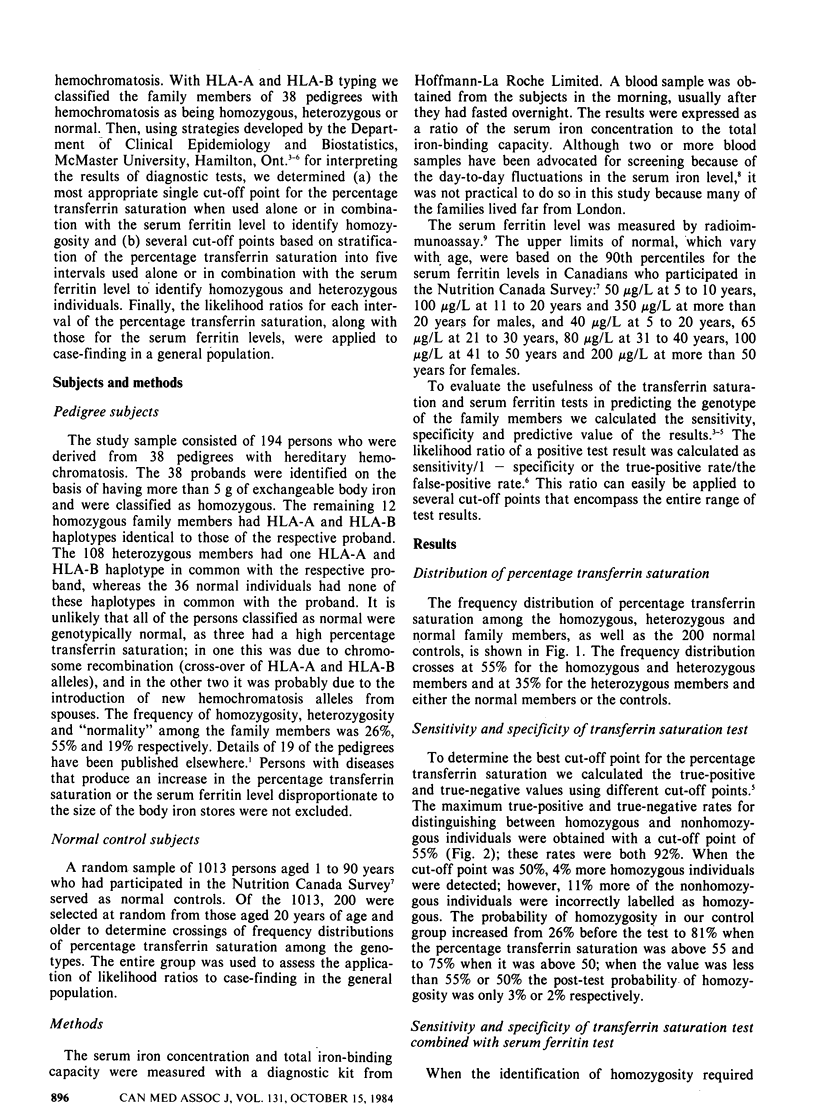
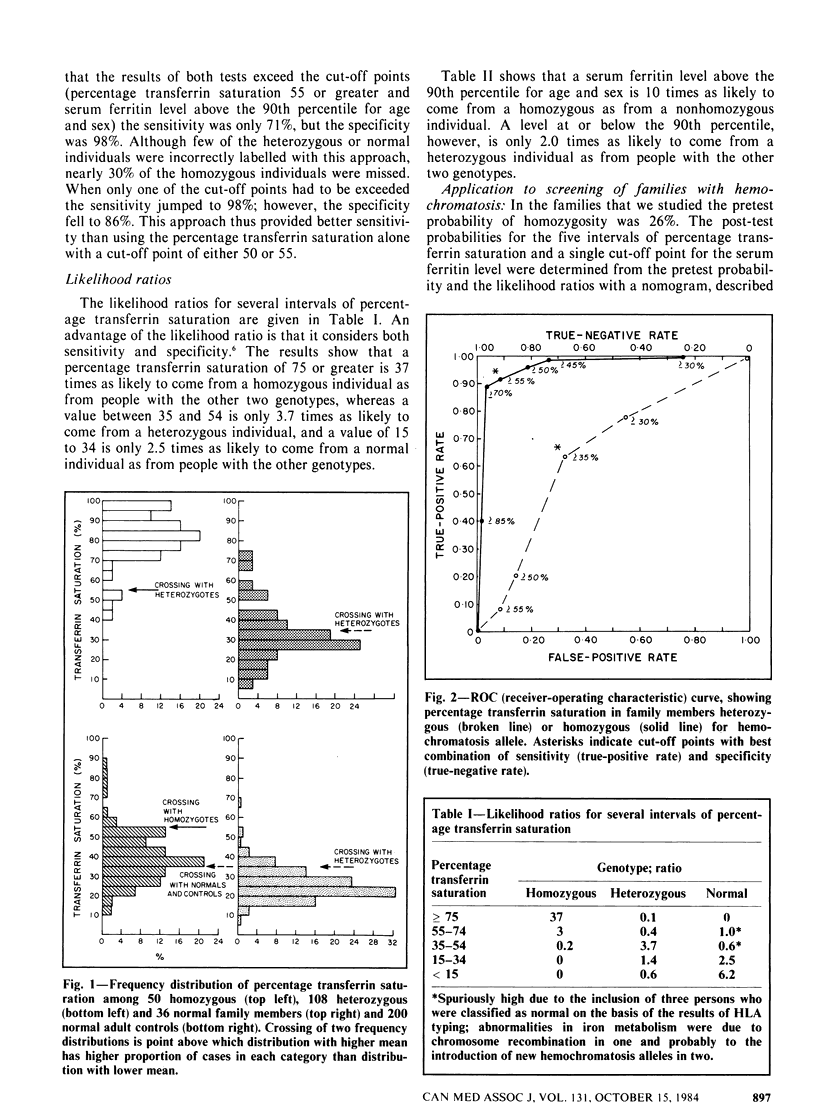
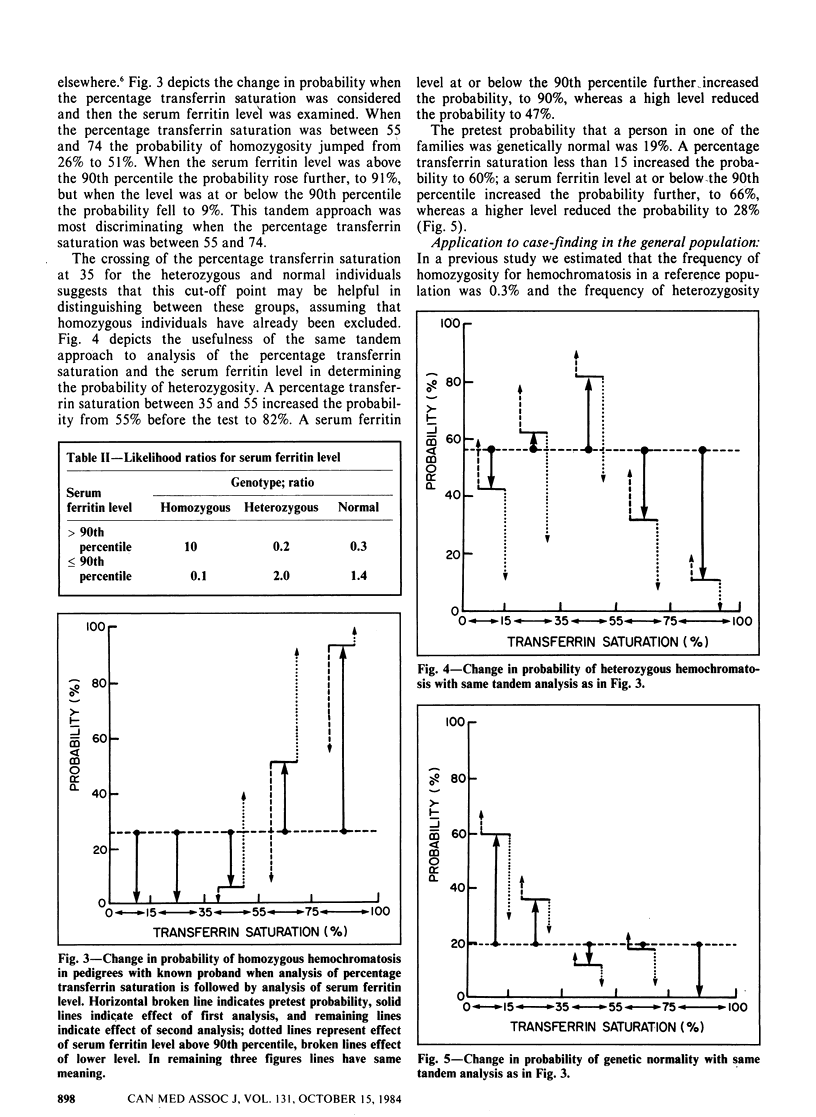
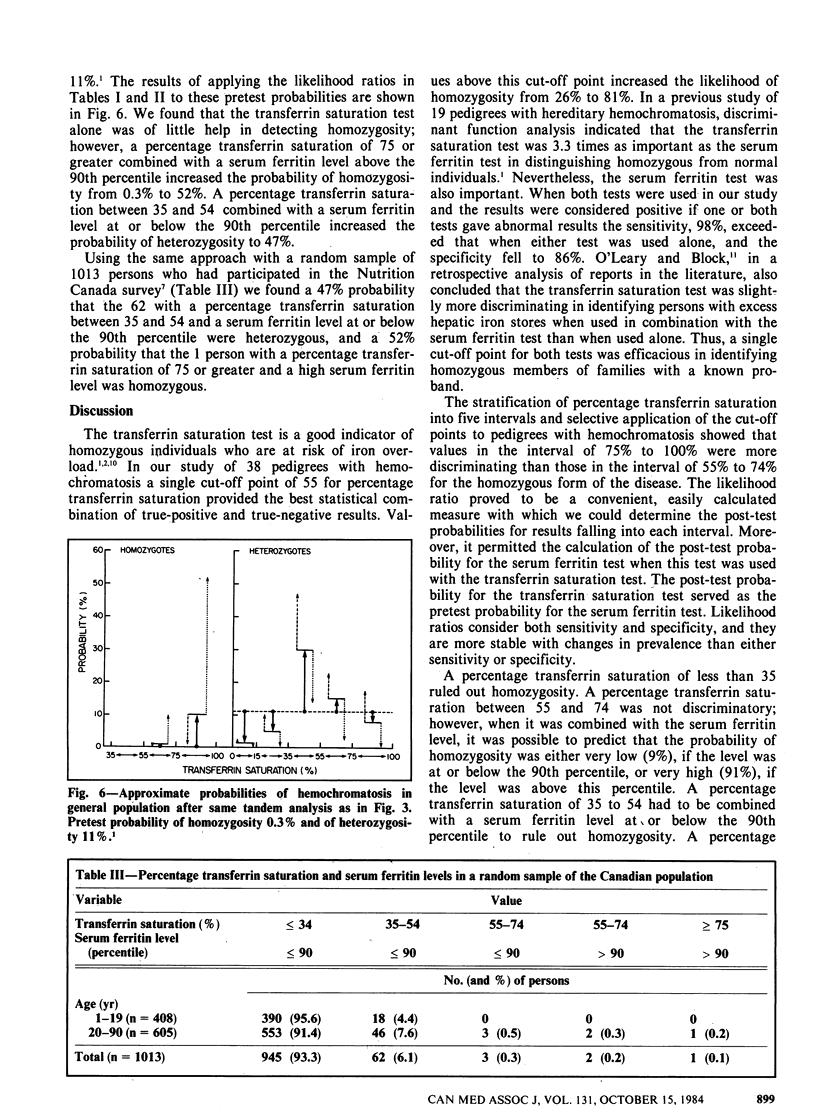
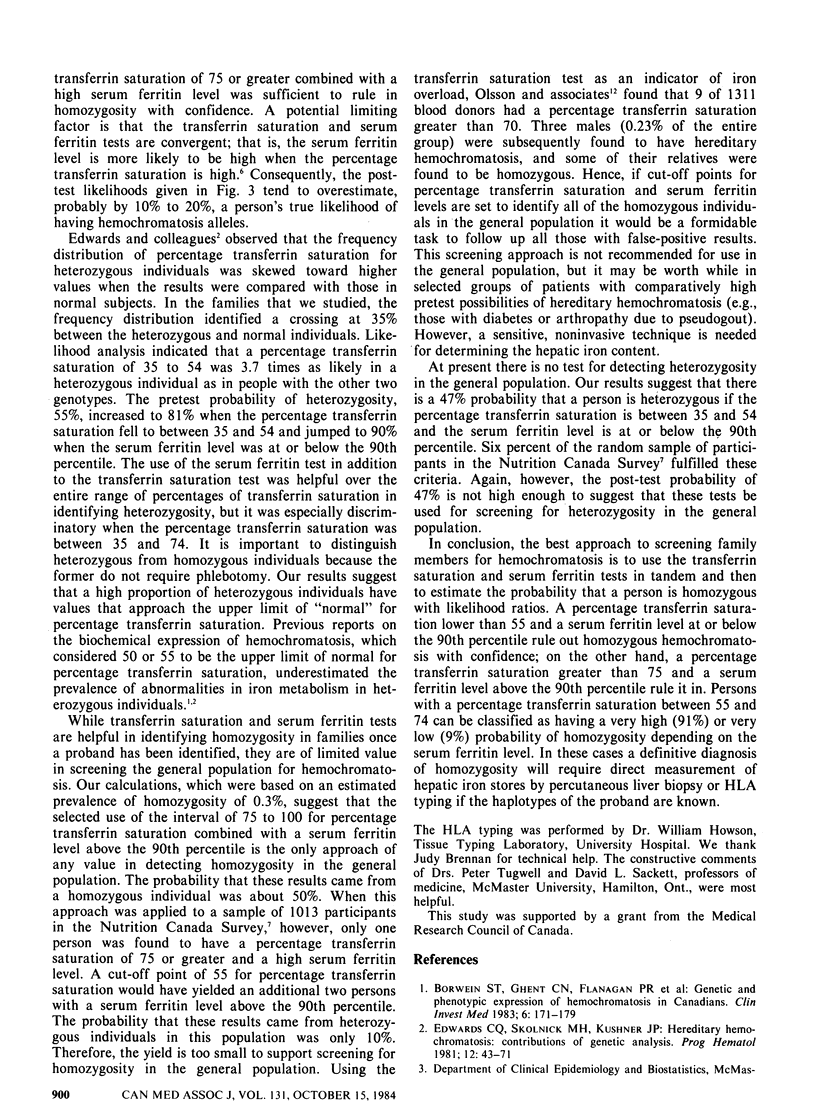
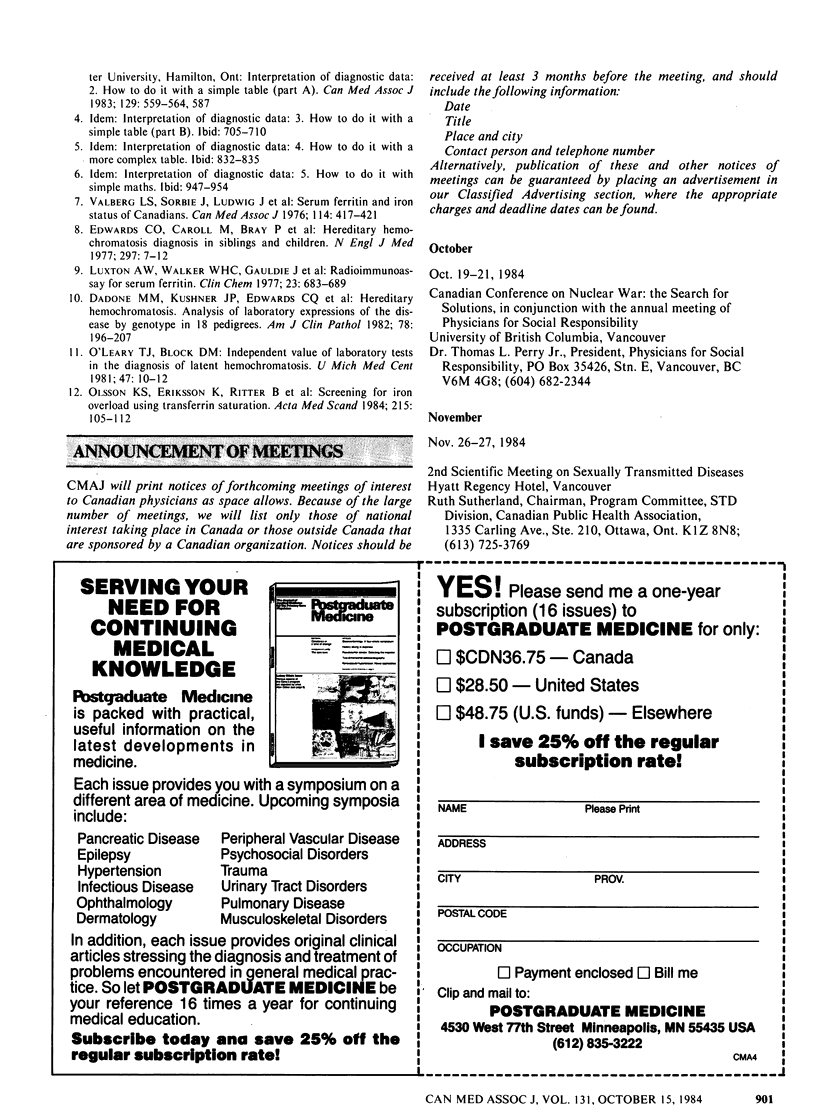
Selected References
These references are in PubMed. This may not be the complete list of references from this article.
- Borwein S. T., Ghent C. N., Flanagan P. R., Chamberlain M. J., Valberg L. S. Genetic and phenotypic expression of hemochromatosis in Canadians. Clin Invest Med. 1983;6(3):171–179. [PubMed] [Google Scholar]
- Dadone M. M., Kushner J. P., Edwards C. Q., Bishop D. T., Skolnick M. H. Hereditary hemochromatosis. Analysis of laboratory expression of the disease by genotype in 18 pedigrees. Am J Clin Pathol. 1982 Aug;78(2):196–207. doi: 10.1093/ajcp/78.2.196. [DOI] [PubMed] [Google Scholar]
- Edwards C. Q., Carroll M., Bray P., Cartwright G. E. Hereditary hemochromatosis. Diagnosis in siblings and children. N Engl J Med. 1977 Jul 7;297(1):7–13. doi: 10.1056/NEJM197707072970102. [DOI] [PubMed] [Google Scholar]
- Luxton A. W., Walker W. H., Gauldie J., Ali A. M., Pelletier C. A radioimmunoassay for serum ferritin. Clin Chem. 1977;23(4):683–689. [PubMed] [Google Scholar]
- Olsson K. S., Eriksson K., Ritter B., Heedman P. A. Screening for iron overload using transferrin saturation. Acta Med Scand. 1984;215(2):105–112. doi: 10.1111/j.0954-6820.1984.tb04979.x. [DOI] [PubMed] [Google Scholar]
- Valberg L. S., Sorbie J., Ludwig J., Pelletier O. Serum ferritin and the iron status of Canadians. Can Med Assoc J. 1976 Mar 6;114(5):417–421. [PMC free article] [PubMed] [Google Scholar]


